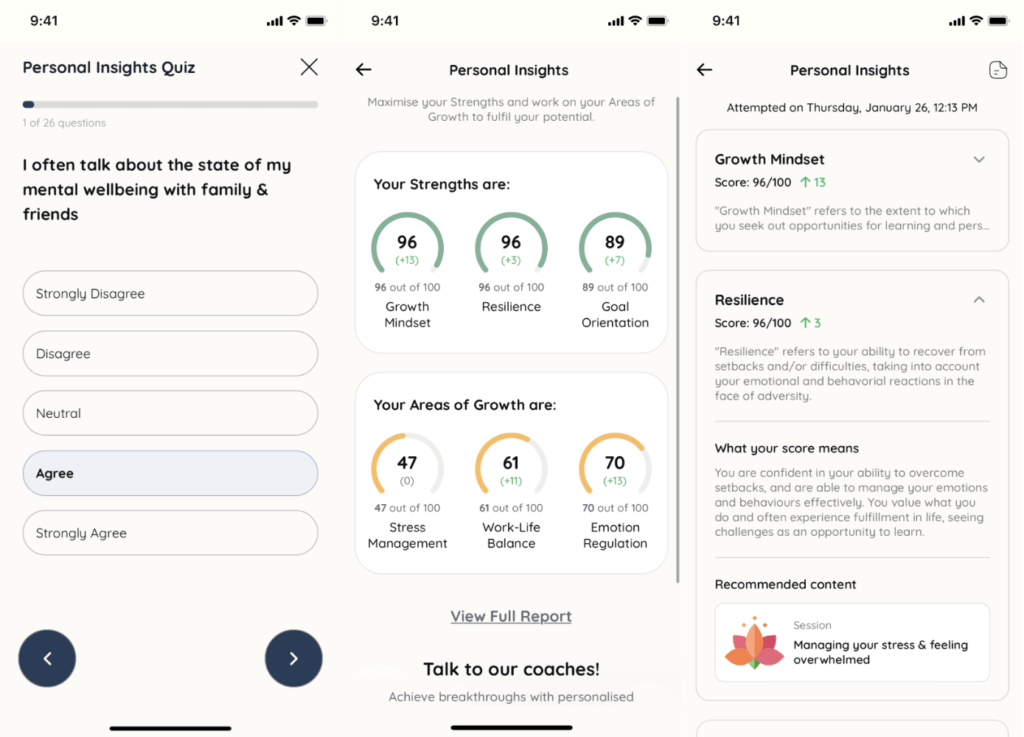The advent of hybrid and remote work has created a curious attendance problem: People are showing up too often for work. As workforces go remote or hybrid, employees sometimes feel compelled to show up for all Zoom meetings and the occasional on-site even when they may not be feeling 100%.
This issue is known as presenteeism, a portmanteau of “present” and “absenteeism,” where team members may be present physically but absent mentally.
What causes presenteeism?

There are various causes of presenteeism. Some team members may be sick or ill; others may be disengaged – no longer finding fulfilment in their work – or overworked.
According to McKinsey, burnout is particularly acute in Asia, where one out of three workers experience symptoms of burnout, compared to one out of four globally. Erman Tan, President of the Singapore Human Resources Institute, attributed presenteeism partially to the Asian mindset, which places importance on demonstrating productivity.
No matter the cause, burnout takes a toll on the physical and mental wellbeing of individuals and can affect that of those around them. When that happens, organisations pay the price in terms of workplace productivity and employee engagement.
Based on Intellect’s Workplace Health Study in 2021, 23.4% of employees reported having 12 to 36 days per year disturbed due to individual wellbeing and health concerns. Taking the income range and man hours into account, presenteeism costs employers S$5,700 to S$9,500 per employee every year.
Against this backdrop, how can organisations reduce presenteeism?
Implement pulse surveys

Employee feedback is valuable, but how does this translate into dollars and cents? A study in 2016 revealed that organisational changes brought about by pulse surveys can boost revenue by up to 2.5 times.
Even not participating in a pulse survey can be telling of an organisation’s engagement levels, as Facebook discovered. Employees who did not complete any of their two annual surveys were 2.6 more times likely to quit over the next sixth months. Administered correctly, pulse surveys can help remedy unhealthy workplace cultures before they deteriorate.
Intellect Dimensions, for instance, is an evidence-based and outcome-oriented tool that tracks employee mental health and calculates an organisation’s Return on Investment after adopting Intellect as a mental wellbeing solution. After eight weeks of engagement on the platform, the average user experienced an increase in productivity by 7.6 days and a decrease in absenteeism by 6 days. The result? An ROI of up to 12 times.
Here’s what it looks like:

If the quiz turns out low work-life balance scores across an organisation, implying that their employees are struggling to maintain healthy boundaries between work and personal commitments, existing policies may need work. That brings us to the next point.
Encourage employees to take time off
Over the pandemic, companies in Singapore have gotten creative with leave types. Grab Singapore has a “Love All, Serve All” day off for employees to volunteer and give back to society, while DBS Bank offers marriage leave for newlyweds. Noting that 40% of its workforce is in the “sandwich” generation – a group of middle-aged adults looking after both children and parents – Google also doubled its caregiver’s leave in 2022.
That being said, exotic company perks are not for everyone. When Netflix implemented an unlimited vacation policy, employees ended up working more as no one wanted to be perceived as slacking off. Singaporean media company SGAG was among the companies that followed in Netflix’s footsteps but refined their leave policy accordingly after observing its reception.
The lesson here is this: time off has to make sense for your people. A primarily office-based organisation may offer no questions asked work-from-home days, while a company in a high-touch industry, such as advertising, may adopt offline hours or even days.
Normalise working smarter, not harder
Business culture in Asia has been inextricably linked to hustle culture. In China, many workers follow a 9-9-6 schedule, where they work from 9 am to 9 pm, 6 days a week. In Japan, death by over-work is so common that it has a term: karoshi. In Hong Kong, 46% of employees work more than 50 hours per week, according to a workplace survey by Rand Europe.
While some seasons at work are more intensive than others, like in the days leading up to a product launch, “hustling” for the long term is a recipe for burnout. While employees in Asia boast the world’s longest working hours, they’re also the least productive and healthy.
It’s time for workforces to work smarter, not harder. After all, increasing results while decreasing effort is essential to scaling any business. It could be equipping people managers with delegation skills or rewarding an individual contributor’s efforts to augment processes. What an organisation incentivises sends a resounding message of what employees should prioritise.
Company leaders can also be role models in advocating against toxic productivity, as wellness programs are effective to the extent that the upper management is congruent. For example, if your direct manager is working twelve hours a day, eating take-out at their desk, and messaging others on weeknights and weekends, asking for a mental health day can prove difficult.
Institutionalise weekly one-on-ones

Did you know that employees who have twice as many one-on-ones with their managers as their peers are 67% less prone to disengagement? Internal studies at Microsoft and Cisco concur ,while a separate study of 350 managers and individual contributors revealed that frequent one-on-ones reduce feelings of fear and anxiety.
The agenda could range from providing status updates, overcoming roadblocks, or exploring opportunities for learning and development. Rather than asking yes or no questions, managers can use open-ended conversation starters to get team members talking. This could sound like “what barriers can I help you overcome?” instead of “are you on track to completing the project?”.
By measuring how employees fare across 13 aspects, like the degrees to which they possess a growth mindset, goal orientation, and self efficacy, Intellect Dimensions can inform how an organisation approaches one-on-ones. If an organisation sees low wellbeing scores across the board, managers may begin by talking to employees about their mental health. Not sure where to begin? Click here for an ebook Intellect collaborated with EngageRocket on.
Exploring ways to reduce presenteeism
It’s easy to know when a worker is physically absent but psychological, emotional, and mental absence is far more inconspicuous. Reducing presenteeism, therefore, has to be a concerted effort across all levels of an organisation. Company leaders can revisit policies; HR can implement pulse surveys and recognition frameworks; and managers can engage with their team members differently. A culture of wellbeing does not form overnight, and while the best time to start was yesterday, the next best time to do so is now.








